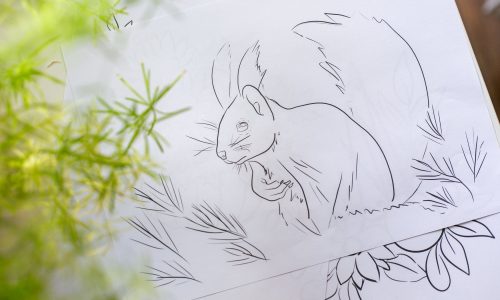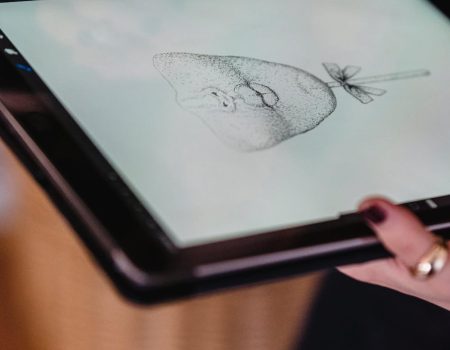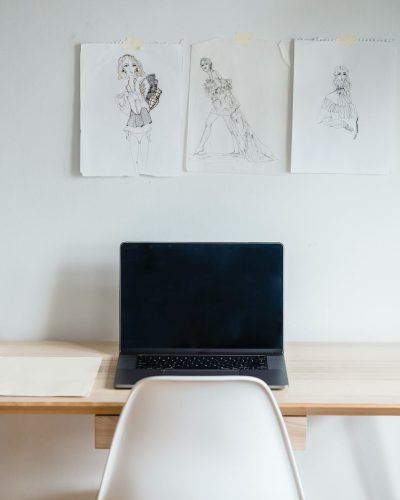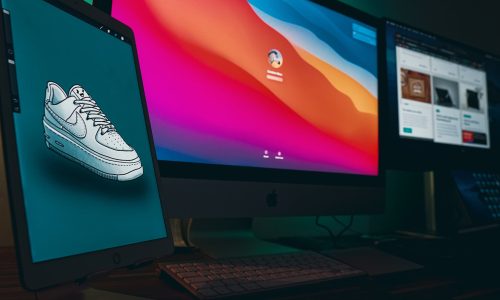Choosing The Right Drawing For Digital Transformation
Choosing the right drawing for digital transformation largely depends on the goal you want to achieve. Above all, the type of drawings you choose will impact the success of the digital transformation project. In this article, we will look into the different issues or questions that you might have when converting your drawings into fine digital art.
- Essential tools for converting drawings to digital art
- An easy to follow step-by step guide into transforming drawings into art
- How to enhance your drawings with art techniques
- Tips for seamless transitions
- Common mistakes when converting drawings into digital art
- Exploring more possibilities
First, decide whether you need a technical drawing or a conceptual drawing. Technical drawings are detailed and specific, providing a clear understanding of the project’s components and functions. They are ideal for designs with complex parts, such as mechanical or architectural drawings.
On the other hand, conceptual drawings are less detailed and focus more on the design’s overall appearance. They are ideal for projects that require more artistic interpretations, such as logo designs, user interfaces, or 3D modeling.
Overall, the right drawing is one that accurately communicates your project’s objectives and alignments with your overall digital transformation strategy.

Essential Tools For Converting Drawings To Digital Art
Most importantly, converting drawings to digital art involves using specific tools to achieve a clean and professional finish. The essential tools needed for this process include
- a scanner which is used to digitize the original drawing. Plus an image editing software such as Adobe Photoshop for editing and refining the scanned image.
- graphics tablet which allows for precise and accurate drawing directly onto the digital canvas. Furthermore, the tablet operates with specialized software such as Corel Painter, which supports intuitive pressure and stylus sensitivity for sketching and coloring.
Another really important tool to have is a high-resolution monitor that accurately displays color and enables the artist to visualize fine details. So, remember that even if, investing in these tools not only enhances your digital artwork but also saves time and energy by streamlining the conversion process.

Step-by-Step Guide Into Transforming Drawings Into Digital Art
Transforming drawings into digital art requires a few simple steps:
1. First you need to scan or photograph your drawing to upload it onto your computer.
2. Secondly, open your preferred digital art program such as Adobe Photoshop or Illustrator. There are Photoshop alternatives
3. Thirdly, use the pen tool to create outlines around the drawing. Make sure to close the shapes for easy selection.
4. Then, use the selection tool to select each shape and fill them with color using the paint bucket tool.
5. Of course i’ts possible to add shading and highlights to create depth and dimensionality. Furthermore, you can use the gradient tool or brush tool for this.
6. Followed by, applying any finishing touches such as texture, filters or effects.
7. Et Voilà, done, save your digital artwork in the desired format.
Make sure to practice and experiment with various digital art tools and techniques to find what works best for your style and vision. Most of all, be patient as with some patience and practice, anyone can turn their drawings into stunning digital art.
Enhancing Your Drawings With Digital Art Techniques
As you have understood, enhancing your drawings with digital art techniques involves merging the traditional methods of drawing with the use of digital tools to create a unique and polished result.
To enhance your drawing even more, you can also use digital tools to add effects and filters that would be hard to achieve manually, such as adding a glow or vignette. Another technique is to scan your traditional drawing and use it as a base layer to start creating a digital painting. This gives you the freedom to experiment with different colors, shading techniques, and even add new elements to the composition without affecting the original drawing.
Do take a look around the web us there are many digital art tutorials and resources available online that can help you learn these techniques and take your drawings to the next level. Even print a hand-drawn design on a shirt is something to look at as a technique.

TIPS For Seamless Transitions
Making a transition from traditional drawing to digital art can be a big leap, but here are some tips to help make the process smoother:
1. Invest in a graphics tablet and a good digital art software that fits your needs.
2. Start by exploring your tools and practicing with basic shapes and lines.
3. Experiment with different brushes and settings to get comfortable with your software.
4. Pay attention to layers and keep your work organized.
5. Take breaks frequently to avoid eye strain and maintain focus.
6. Keep your traditional art skills in mind as you switch to digital, as many skills can be transferred.
7. Don’t be afraid to seek out tutorials and resources to help guide you.
8. Be patient with yourself and allow time to learn and grow with the new medium.
Remember that transitioning to digital art requires practice and patience. With time and dedication, you can develop a unique style that combines traditional and digital media.
Common mistakes to Avoid
Converting drawings into digital art can be tricky, especially if you’re not familiar with the process. Here are some common mistakes to avoid:
A. First of all, dont rush the scanning process:
Before you start converting your drawings, make sure that the scanning process is done properly. Poor quality scans can result in pixelated or blurry digital images.
B. Secondly, Do not ignore the resolution:
When scanning or saving your image, it’s important to consider the resolution. A low resolution image may look fine on your computer screen, but it won’t print well. A resolution of at least 300 dpi is recommended for print-quality digital art.
C. Not using layers:
Layers are the building blocks of digital art, allowing you to edit and adjust individual elements without affecting the entire image. Failure to use layers can result in irreversible mistakes.
D. Not using the right software
Make sure you use software that is designed for digital art. Using an inappropriate tool can result in a poor-quality final product.
By avoiding these common mistakes, you can achieve high-quality digital art from your hand-drawn sketches.
Exploring The Creative Possibilities Of Digital Drawing Techniques
By now you kinda of understand that there is a lot to consider when converting drawing to digital art but don’t forget to stay creative and follow your instincts. What can go wrong really? After all, digital drawing techniques offer a vast array of creative possibilities. Allowing artists to explore a variety of styles and techniques that may have been difficult to achieve using traditional mediums. So, the amazing ability to manipulate layers, colors, and effects in real-time makes digital drawing an engaging, flexible, and dynamic art form.
For instance, artists can explore and use digital drawing techniques to experiment with different styles, from realistic and naturalistic to abstract and stylized. Additionally, digital drawing tools like brushes, pencils, and pens can be customized to achieve specific effects that would be difficult or impossible to produce with traditional tools.
Another example to explore the creative possibilities is to understand that the digital medium also offers the ability to share work with a global audience, through online galleries and social media platforms. Totally unknown artists can therefore build a following and gain recognition while breaking down cultural and geographical limitations.
6 Examples Of Free Digital Art Programs To Convert And Enhance Images
There are several free digital painting programs available for artists of all levels. Below are some of the most popular ones. However all of them might not be suitable for your needs.
Krita – a powerful open-source painting program that mimics real-world painting techniques. Not as powerful as photoshop
GIMP – a free and versatile image manipulation program that includes painting tools.
MyPaint – a simple yet effective digital painting tool that focuses on creating natural brush strokes. One downside is that it lacks some of the advanced features of other digital painting software, such as layer masks or blending modes.
MediBang Paint – a lightweight program with a user-friendly interface and customizable brushes. Mostly used by manga artists as it caters for their needs
Paint.NET – a Windows-based program that offers basic painting tools and is simple to use.
.FireAlpaca – a program that is great for beginners and offers a variety of brushes and tools.
All of these programs are free, have a range of features and are great options for budding digital artists who want to get creative.
Overall, digital drawing techniques have opened up new paths for creative expression while encouraging experimentation, innovation, and collaboration.

Conclusion
In conclusion, converting your traditional drawing into digital art requires a level of creativity and skill. Through the use of digital tools, you have the ability to enhance and transform your original piece in various ways. It is important to consider the composition and color scheme of the original artwork as you work to digitize it.
Additionally, experimenting with different digital brushes and effects can add depth and dimension to your digital art. Be patient and take the time to explore your creativity, testing out different techniques and approaches until you achieve the desired result. Remember, the beauty of any digital art is its malleability and the ability to continually refine and improve upon your design.
